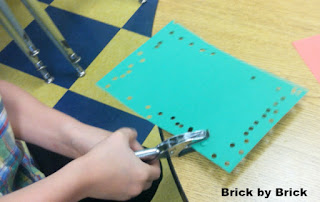This fall I'm reading Purposeful Play by Mraz, Porcelli, and Tyler.
Chapter 2 - Balanced Play: How It Makes Kids' Lives Better
This chapter covered a lot of material that I was already familiar with. What I like about this book is that it covers topics succinctly and pulls ideas from different sources in an easily understandable way. The authors cover different types of play and different stages of play - and while I have read about these types of ideas before, I enjoyed reading the treatment of them in this book. Let's look at some of those ideas.
As discussed in other books, the authors stress that play can be just about anything. Different individuals - children and adults - will see different things as play. What it comes down to is the motivation behind the activity. Was the activity self-chosen? Is the activity enjoyable (to the individual)? Can the activity be adapted at the will of the individual? If it fits these types of characteristics, the activity is play for the child or adult.
There are different kinds of play - and a child should have a balance of the different kinds. Kids explore different kinds of concepts and develop in different ways through fantasy/imaginative play, constructive play, games with rules, and rough-and-tumble play. (Check out more about different kinds of play, according to Peter Gray and David Elkind.)
I really liked the different stages of play. This discussion made my think about the play continuum in terms of what is the child doing in relation to other children.
- Unoccupied behavior - watching others when something catches his interest but otherwise unengaged
- Onlooker - deliberately watching others' play and perhaps asking questions about it
- Solitary play - playing alone and totally absorbed in what he's doing; no interaction with others
- Parallel play - playing with same materials as another child but doing his own play; may talk about what he's doing with others
- Associative play - playing with others with same materials or in same activity; talk together about what they are doing but no planning; playing together but not working together
- Cooperative play - playing together on common activity/project, forgoing individual goals for the group's goal
Seeing play as a continuum between individual action and group action is a new insight for me. And makes a lot of sense.
Here are three key quotes from this chapter that I want to remember:
- "There is often such a desire in schools to focus on what children need next that we forget what children need now." (I've said something similar...so I naturally agree!)
- "In all stages of play, children are refining what it means to create, innovate, explore, and develop into incredible human beings." (Play is key to development in all areas.)
- "Play allows children the means and the method to learn and adapt to a changing world." (Play is the natural way that children learn about the world.)




